

投稿 | 基于IAR搭建RA MCU 串口打印
描述
RA MCU 生态工作室致力于构建一个完善的 RA 生态,这将会是一个好玩有趣的开放社区,也提供各种RA相关问题的解决方法。
1.概述
通过RASC创建一个串口工程,具体配置如下,用户可以根据自己定义来配置串口相关的基本参数。
2.创建工程
STEP1:RASC创建工程
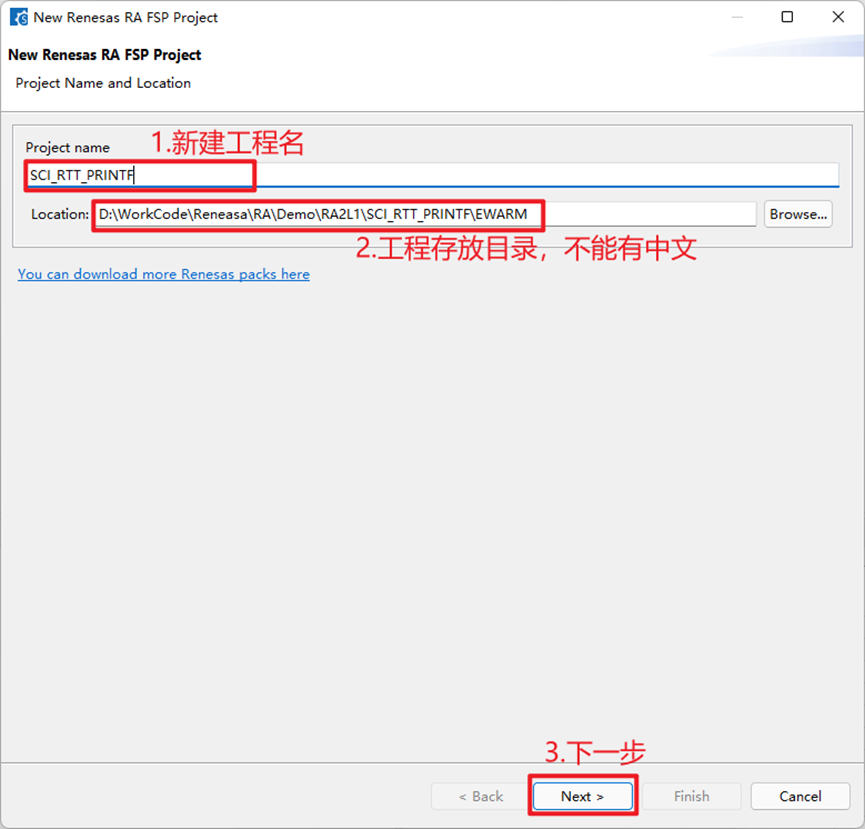
STEP2:选芯片型号跟IDE类型

STEP3:选择芯片型号
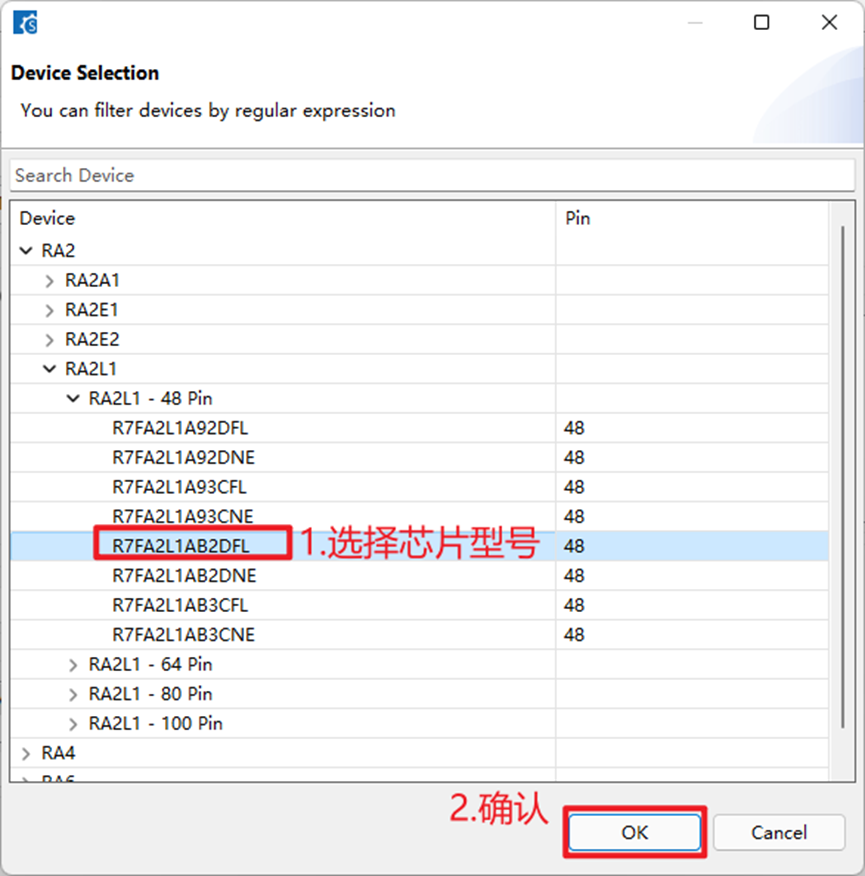
STEP4:选择无操作系统
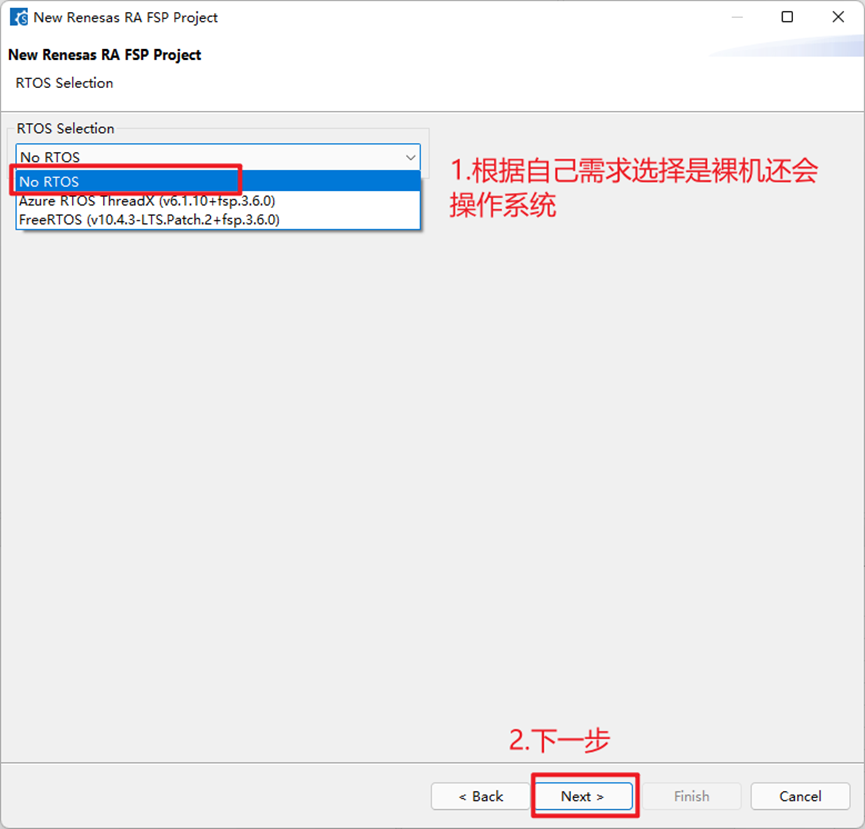
STEP5:勾选确认工程
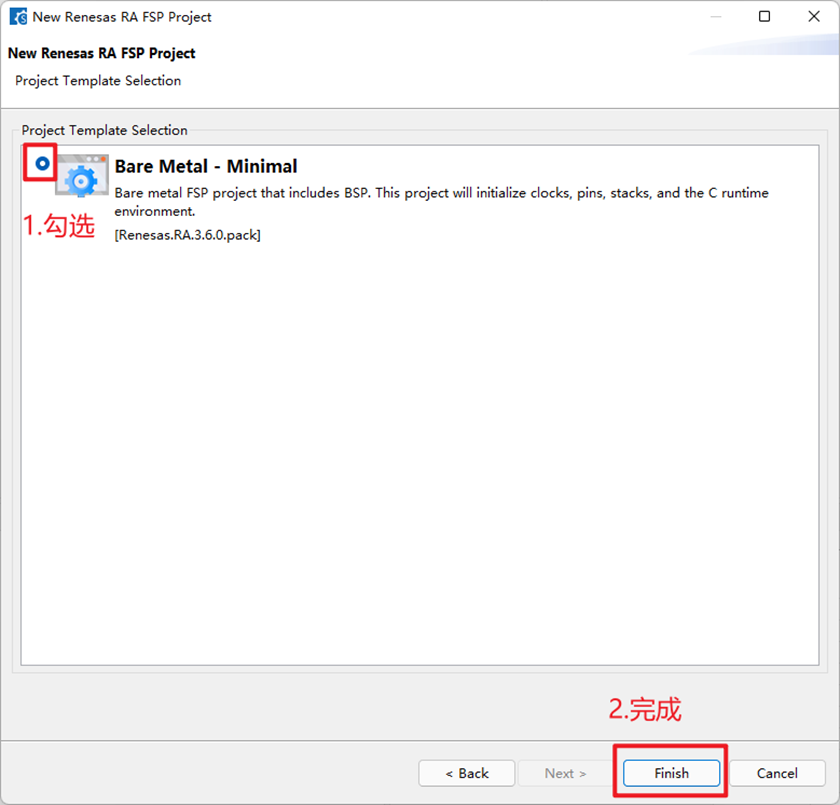
STEP6:配置串口号跟IO口
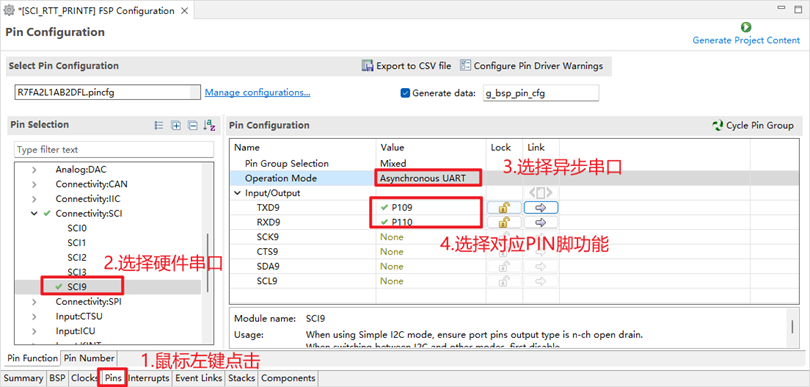
STEP7:添加串口驱动
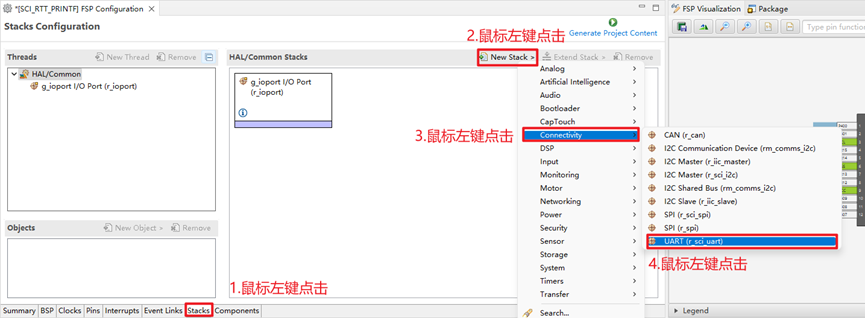
STEP8:配置串口
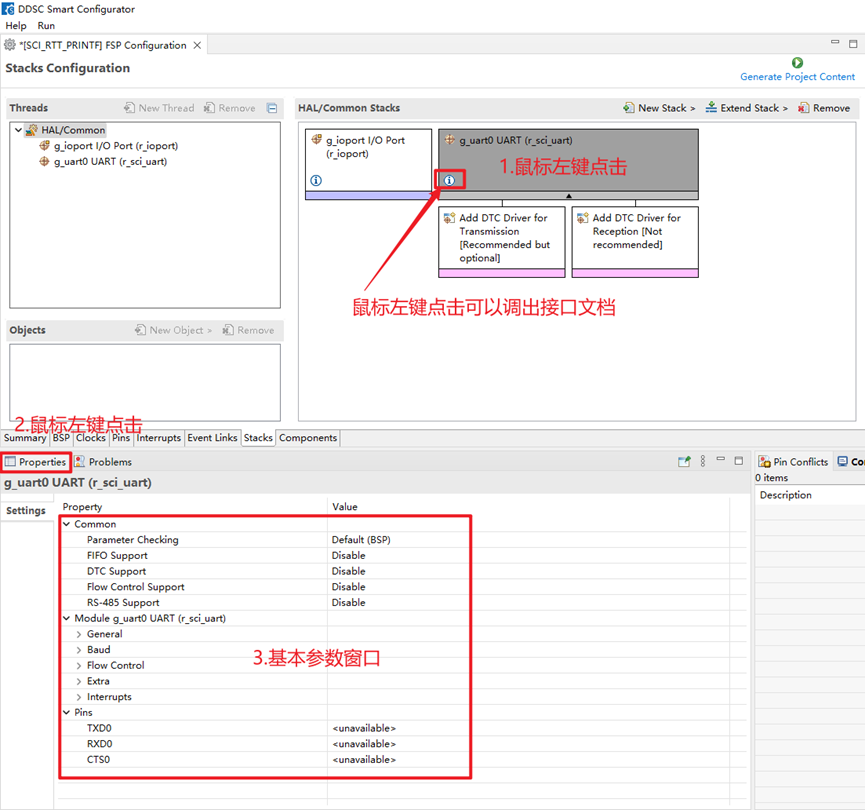
STEP9:配置串口基本属性
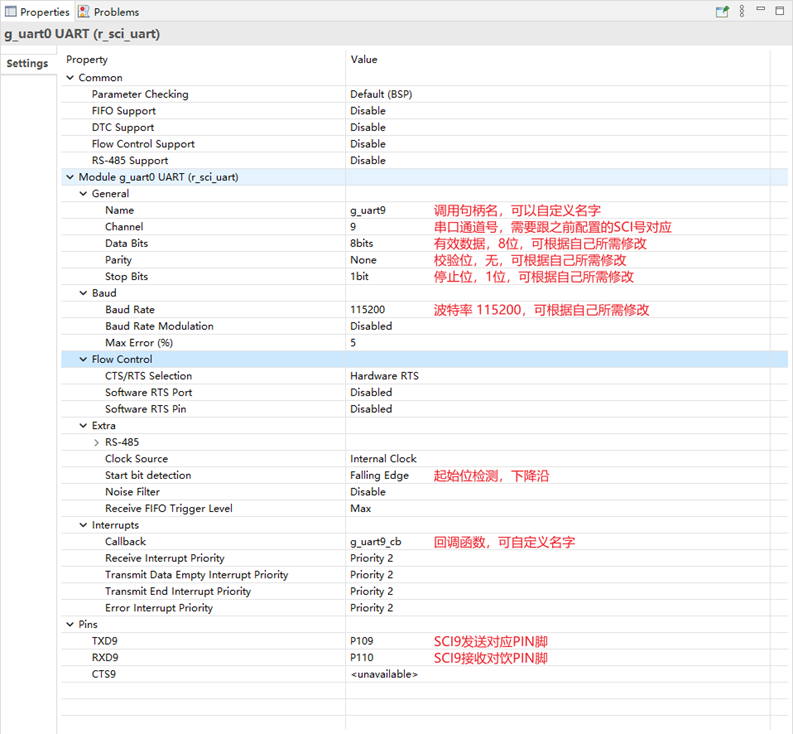
STEP10:生成工程
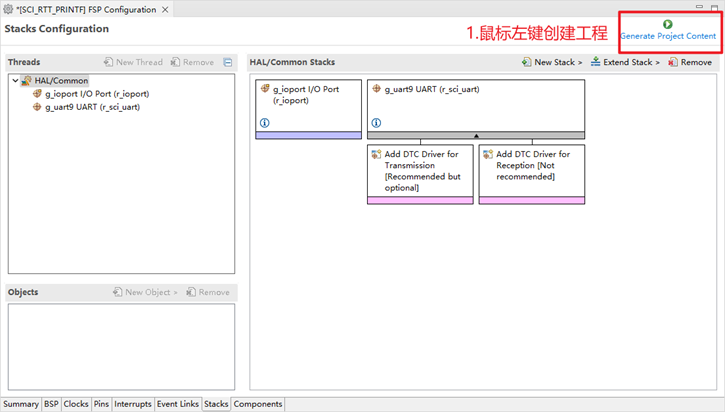
3.代码
STEP11:打开工程
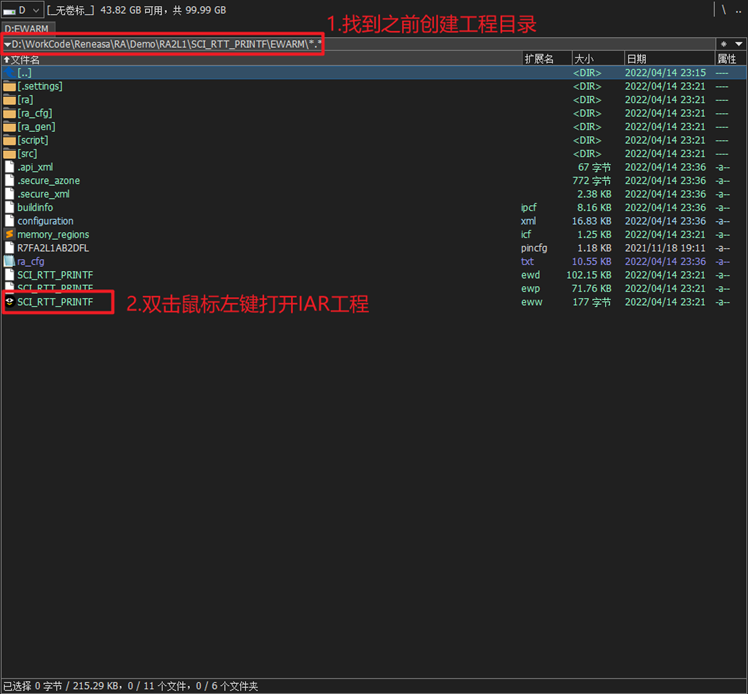
STEP12:添加代码
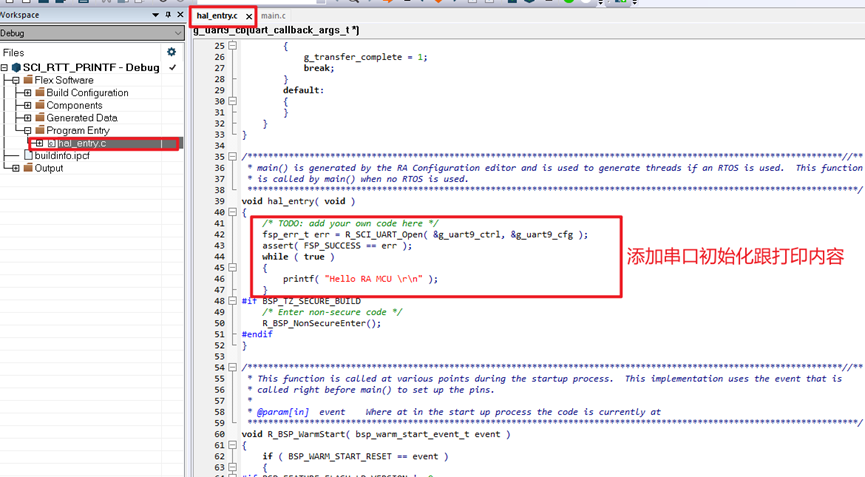
STEP13:具体代码如下
void hal_entry( void )
{
/* TODO: add your own code here */
fsp_err_t err = R_SCI_UART_Open( &g_uart9_ctrl, &g_uart9_cfg );
assert( FSP_SUCCESS == err );
while ( true )
{
printf( "Hello RA MCU \r\n" );
}
#if BSP_TZ_SECURE_BUILD
/* Enter non-secure code */
R_BSP_NonSecureEnter();
#endif
}
STEP14:添加头文件跟串口回调函数
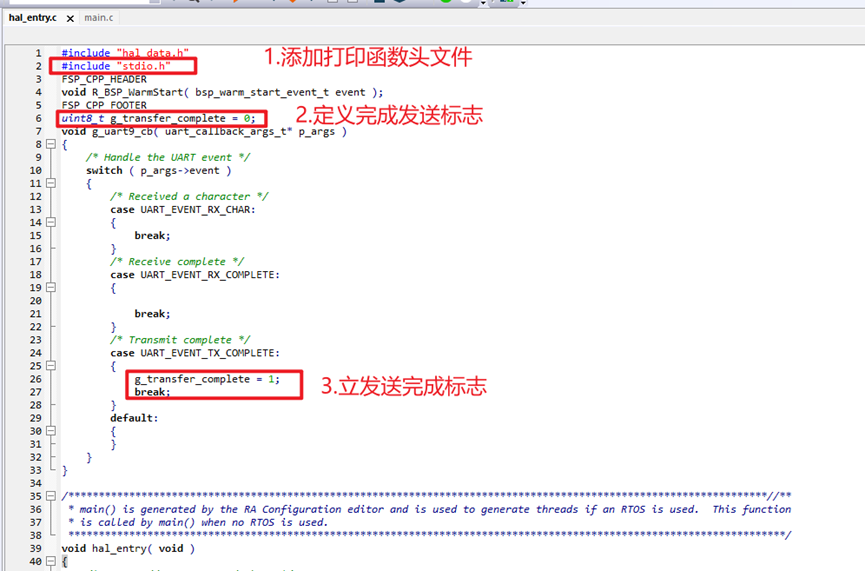
STEP15:具体代码如下
#include "hal_data.h"
#include "stdio.h"
FSP_CPP_HEADER
void R_BSP_WarmStart( bsp_warm_start_event_t event );
FSP_CPP_FOOTER
uint8_t g_transfer_complete = 0;
void g_uart9_cb( uart_callback_args_t* p_args )
{
/* Handle the UART event */
switch ( p_args->event )
{
/* Received a character */
case UART_EVENT_RX_CHAR:
{
break;
}
/* Receive complete */
case UART_EVENT_RX_COMPLETE:
{
break;
}
/* Transmit complete */
case UART_EVENT_TX_COMPLETE:
{
g_transfer_complete = 1;
break;
}
default:
{
}
}
}
STEP16:添加打印接口重定向代码,具体如下
/*******************
*
* Copyright 1998-2017 IAR Systems AB.
*
* This is a template implementation of the "__write" function used by
* the standard library. Replace it with a system-specific
* implementation.
*
* The "__write" function should output "size" number of bytes from
* "buffer" in some application-specific way. It should return the
* number of characters written, or _LLIO_ERROR on failure.
*
* If "buffer" is zero then __write should perform flushing of
* internal buffers, if any. In this case "handle" can be -1 to
* indicate that all handles should be flushed.
*
* The template implementation below assumes that the application
* provides the function "MyLowLevelPutchar". It should return the
* character written, or -1 on failure.
*
********************/
#include
#pragma module_name = "?__write"
int MyLowLevelPutchar(int x)
{
R_SCI_UART_Write(&g_uart9_ctrl, (uint8_t *)&x, 1);
while(g_transfer_complete == 0);
g_transfer_complete = 0;
return x;
}
/*
* If the __write implementation uses internal buffering, uncomment
* the following line to ensure that we are called with "buffer" as 0
* (i.e. flush) when the application terminates.
*/
size_t __write(int handle, const unsigned char * buffer, size_t size)
{
/* Remove the #if #endif pair to enable the implementation */
#if 1
size_t nChars = 0;
if (buffer == 0)
{
/*
* This means that we should flush internal buffers. Since we
* don't we just return. (Remember, "handle" == -1 means that all
* handles should be flushed.)
*/
return 0;
}
/* This template only writes to "standard out" and "standard err",
* for all other file handles it returns failure. */
if (handle != _LLIO_STDOUT && handle != _LLIO_STDERR)
{
return _LLIO_ERROR;
}
for (/* Empty */; size != 0; --size)
{
if (MyLowLevelPutchar(*buffer++) < 0)
{
return _LLIO_ERROR;
}
++nChars;
}
return nChars;
#else
/* Always return error code when implementation is disabled. */
return _LLIO_ERROR;
#endif
}
4.工程配置
STEP17:工程配置
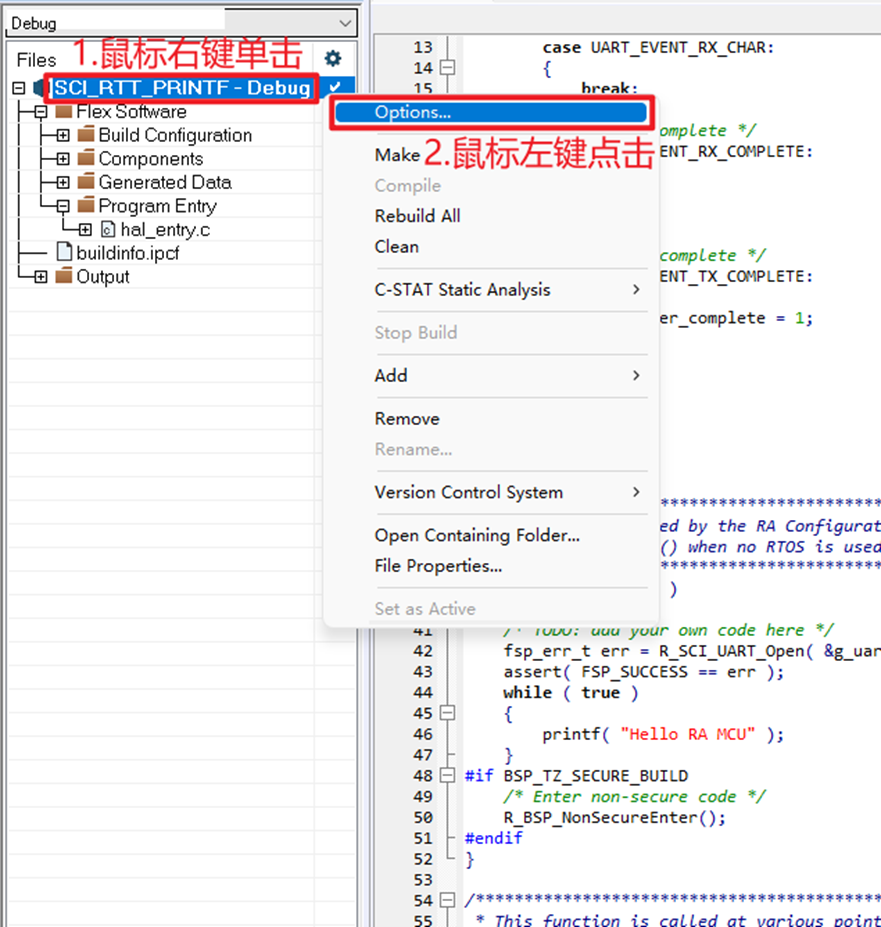
STEP18:弹出如下窗口
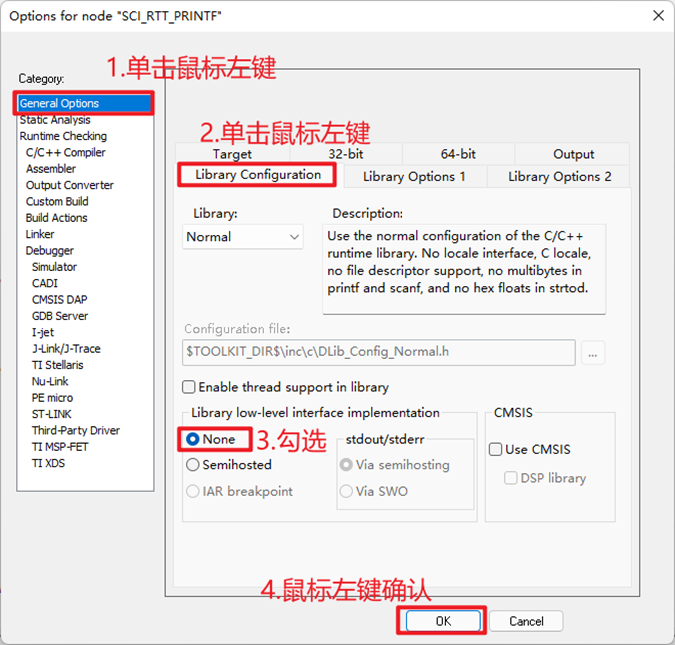
5.结果
STEP19:接上串口工具,打印如下
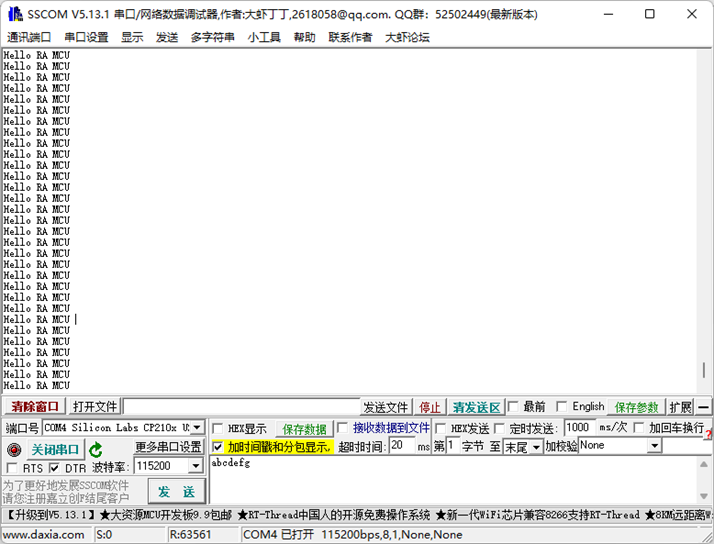
投稿:欣瑞利科技@Moxair
声明:本文内容及配图由入驻作者撰写或者入驻合作网站授权转载。文章观点仅代表作者本人,不代表电子发烧友网立场。文章及其配图仅供工程师学习之用,如有内容侵权或者其他违规问题,请联系本站处理。
举报投诉
- 相关推荐
- 热点推荐
- mcu
-
【RA-Eco-RA6M4开发板评测】1、开发环境搭建和串口打印信息2025-07-22 1381
-
电子时钟制作(瑞萨RA)(1)----使用串口进行打印2023-12-01 1517
-
IAR为瑞萨RA8系列MCU开发提供支持2023-11-02 1702
-
瑞萨RA MCU串口通信空闲中断2023-09-26 1803
-
基于IAR for arm9.30.1在VS Code调试仿真RA2023-08-26 4449
-
RA4M2开发(1)----使用串口进行打印2023-07-27 2391
-
基于IAR搭建RA MCU串口与RTT Viewer打印(上)2023-01-09 1354
-
RA2E1实现RTT Viewer串口打印2022-12-09 2587
-
【瑞萨RA4系列开发板体验】第二章 搭建开发环境(基于IAR)2022-11-24 4458
-
投稿 | 基于IAR仿真RA低功耗2022-11-04 2005
全部0条评论

快来发表一下你的评论吧 !

